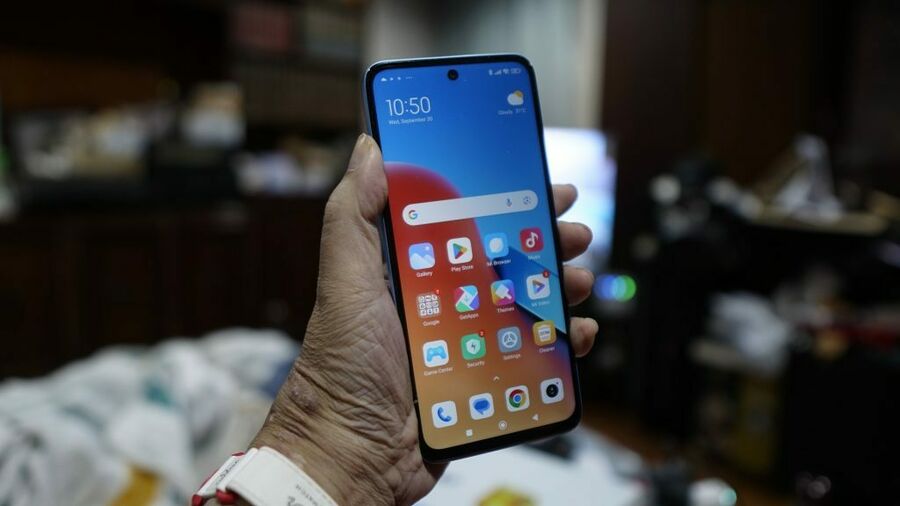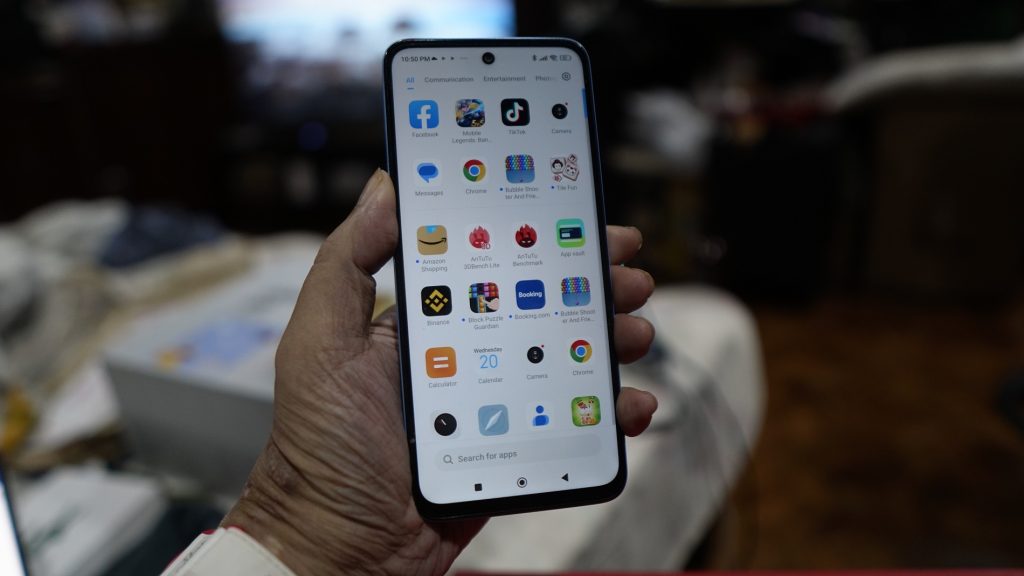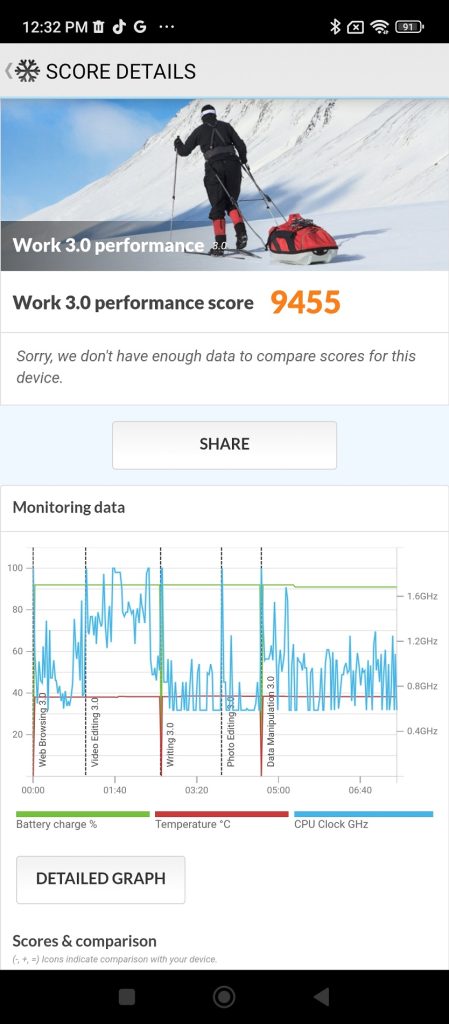
When I was offered to review the new Redmi 12, I had to check our site archives if I have reviewed any of the Redmi series. Apparently, I did review two of them: the Redmi 6A five years ago, and also had the very first Redmi 1s way back in 2014. Aside from the Redmi 12C we reviewed last summer, the Redmi 12 is the latest edition of the series, which I personally think is the best so far. Let’s dive in to my review and find out what I like (or not like) about this new phone from Xiaomi.
Table of Contents
Xiaomi Redmi 12 Specs:
| OS: | MIUI 14, Android 13 |
|---|---|
| Processor: | MediaTek Helio G88 |
| Display: | 6.79-inch 90Hz IPS LCD |
| Wireless Connections: | 4G, Bluetooth 5.3, Wi-Fi 802.11 a/b/g/n/ac, GPS, GLONASS, BDS, GALILEO |
| Memory: | 8GB+128GB 8GB+256GB |
| Connectors: | USB Type-C, OTG |
| Cameras: | Rear Camera: Main – 50MP, f/1.8 Ultrawide – 8MP, f/2.2 Depth – 2MP, f/2.4 Front Camera: 8MP, f/2.1 |
| SIM Card Slots: | Dual SIM (Nano-SIM) |
| Battery: | 5,000mAh 18W Wired Charging |
| Price: | 8GB+128GB: Php 7,999 8GB+256GB: Php 8,999 |
The Unboxing

Like the other Redmi phones, the Xiaomi Redmi 12 appears in a white package with the image of the phone on its cover.

Inside the box are the Xiaomi Redmi 12 review unit, Silicon Case, Type-C USB Cable, USB Charger Head, SIM Card Ejector Pin and User Manuals.
The Looks and Feel

Looking at the Redmi 12 for the first time, I noticed it has almost the same size as the Redmi 12C. What’s different is the refined design of the Redmi 12 which makes it appear a premium product.

Found on its right side are the volume controls and power button, which also doubles as a fingerprint scanner. On the other side is the SIM Card slot which can accommodate two Nano SIM Cards or a Micro SD Card. It has a thickness of only 8.17mm, almost 10% thinner than its previous iteration.

Here at the bottom part are the speaker grille, USB Type-C port, and microphone. On top are the 3.5mm headphone jack and, surprisingly an IR (Infrared) Port. I find this very useful especially at home which I sometimes use as a remote control for our Mi TV.

As I mentioned earlier, the Redmi 12’s new design is what I think will make it a much sought-after device. It is now made of a premium glass back and a flat-edged design, reminiscent of the popular product of a fruit brand. Not only that, the Redmi was designed and built with dust and splashing water resistance in mind and has a rating of IP53.2. Unlike in most smartphones nowadays, it doesn’t have a camera module. The three lenses and an LED flash blended perfectly with the glass back cover. Our review unit comes in Sky Blue, but it is also available in Midnight Black and Polar Silver.

I wouldn’t say the flat-edged design makes it more comfortable to hold. I prefer curved-edges, but because the Redmi feels solid to my hands, I didn’t mind about comfort at all. One thing I kinda worry though is its glass back cover. It hasn’t slipped off my hands yet, but it might happen sooner or lighter. To be safe, I applied the supplied Silicon Case by Xiaomi. What’s even better is the case comes with a protective cover for the Type-C USB port against dirt and water.
The Display and Sound

The Redmi 12 has a 6.79′′ Full HD+ 2460×1080 resolution DotDisplay – the largest yet in this series. Aside from its high resolution, it also has a 90Hz AdaptiveSync refresh rate. I enjoyed watching videos and playing mobile games on the Redmi 12 as if it was my main high-end phone. Its large screen is immersive and while its not as sharp as its AMOLED counterpart, I found it already sufficient for this phone model.
The speaker quality of the Redmi is loud enough for me to listen to. You can use your favorite wired headphones through its 3.5mm headphone jack or via bluetooth connectivity.
The Performance

Inside the Redmi 12 is a 2.0 GHz MediaTek Helio G88 processor. We were able to review two other phones before running the same processor and we were impressed by its performance. Let’s check the Benchmark test results of the Redmi 12:
Our variant used for these benchmarks is the 128GB/8GB configuration. A 256GB/8GB is also available in the Philippine market.
The Redmi 12 performs well enough on a daily basis. I used it as my main phone for the past few days for my usual phone calls, emails, social media, and entertainment. I am happy to report that I never encountered any hiccups or slow-downs during this period. I just wish that it has 5G and this phone would have been the complete package.

Playing the latest and popular mobile games is possible with the Redmi 12. We installed and tested three games: Mobile Legends, Genshin Impact and the newest popular game Fairlight 84. In the latest update of Mobile Legends, I was able to play under High Frame Right and Ultra Graphics settings flawlessly. On the other hand, we were able to play Genshin Impact under the lowest graphic settings at 60fps. While its playable, we encountered frequent stuttering throughout the game. Graphics were set to Balanced, Frame Rate to Extreme and Resolution to High in Farlight 84. The game was also playable but we occasionally encountered stuttering most especially while surveying an area.

The Xiaomi Redmi 12 runs on MIUI 14 based on Android 13. Like any other smartphone reviewer, I am also annoyed with the amount of bloatware present upon booting up the device. I’m pleased however that MIUI now lets you have the option to have an app drawer. Not sure which MIUI version this feature was introduced but thank goodness it’s now present in the Redmi 12.
The Cameras

Comprising the triple-camera set-up of the Xiaomi Redmi 12 are a 50 Megapixel main camera, 8 Megapixel ultra-wide camera and a 2 Megapixel macro camera. The main camera is set to 12 Megapixels by default which is not bad to use on a daily basis. If you need to use the 50 Megapixel camera for higher resolution images, you’ll need to slide the settings to 50MP while on camera mode. Photos taken during daytime were a bit dim but this is maybe due to the weather. This leads us to try adjusting the HDR feature. It somehow helped improve the image contrast, but what is so annoying is even if we have already set the HDR Auto to On, it will turn itself off after taking a photo.
I commend Xiaomi for including an ultra-wide camera for wide-angle photos. This type of lens is quite rare in the entry-level smartphone segment. Again, using the ultra-wide camera resulted to dimmer photos so post-processing is needed to improve its quality. Night photos can also be challenging. Depending on the amount of light, some photos appeared grainy or washed out. Turning on Night Mode can do the trick, but do not expect it to be at par with those mid-range phones.
The front camera is an 8 Megapixel shooter which is decent enough to use. For the life of me, I couldn’t figure out if Beauty mode is present or turned on.
Here are some photos taken with the Redmi 12:










The Battery Life
The Xiaomi Redmi 12 is equipped with a 5,000 mAh battery, a standard for most smartphones in the market today. Based on our usage, the Redmi was able to last at least 12 hours on a busy day and can last up to the next morning on a single charge. The package comes with an 18W charger head for faster charging of the device.
DR’S CONCLUSION

I rarely like keeping an entry-level smartphone, but my experience with the Xiaomi Redmi 12 even for only a week convinced me that this phone is absolutely a keeper! It has the high-end looks and feel, performs adequately and while the camera has some quirks, it can take decent photos once in a while. How I wish it also has 5G to make this phone a complete package for as low as P7,999.
Here’s some good news! For a limited time, you can purchaes the Redmi 12 8+128GB model for a low early bird price of only P6,999, down from its original price of P7,999. This amazing deal is exclusively available online via Xiaomi’s official global store on Lazada from September 20th to 29th.









